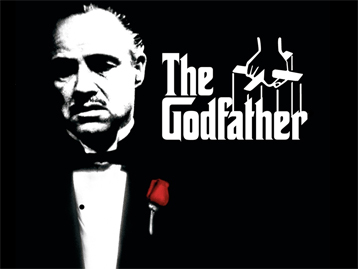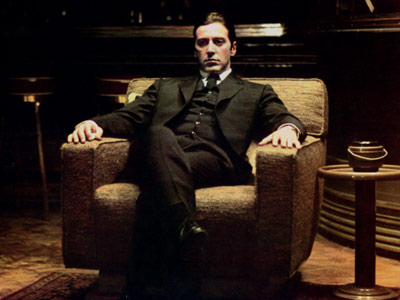 This week’s classic movie is 1972’s The Godfather.
This week’s classic movie is 1972’s The Godfather.
It’s going to take two columns to talk about The Godfather, because I want to start with how the movie was made. In the early ’70s, the studios still hadn’t found their audience. New Hollywood had made a bunch of movies, but none of them had been the kind of blockbuster that would breathe new life into the town. Hollywood hadn’t had a success like that since The Sound of Music in 1965. That’s a long time to go without hitting one out of the park.
Sometime around 1967 or 1968, Mario Puzo rolled into Las Vegas with two novels in tow. They might’ve been good, but nobody read them. He left Nevada with $11,000 in debt and enough knowledge about Cosa Nostra to write a 150-page manuscript called The Mafia.
According to Robert Evans, Paramount’s head of production at the time, Puzo handed Evans the manuscript and told him about the debt. Evans wrote him a check for $12,000 and told him to go finish the novel. Puzo claims this meeting never took place, but however it went down, Paramount didn’t want to make a gangster movie anyway. The studio’s last one flopped, which convinced the brass that whatever the new audience wanted, it wasn’t Italians fighting over turf. But then Puzo’s novel, now called The Godfather, shot to the top of the bestseller list, and Paramount no longer had a choice. Paramount promptly called Puzo and asked him to write a script that updated his novel with hippies and pot and all that zetigeisty stuff. Robert Evans wasn’t so sure that was a good idea.
The subject of the 2002 documentary The Kid Stays in the Picture, Evans was a new breed of studio executive. He wore silk shirts and smoked dope and hung out with the Black Panthers. And when he looked at the history of the gangster film, he saw one thing missing: Italian American directors. So he decided to hire Francis Ford Coppola. The only problem was, Coppola didn’t want to do it.
All Coppola wanted to do was make intimate little movies with his buddies up on Northern California. Finian’s Rainbow had proved to Coppola that his style of intimate filmmaking didn’t mix well with big studio productions. But like Puzo, Coppola was in debt. George Lucas, with whom Coppola had grown close while shooting The Rain People, convinced Coppola that he didn’t have any choice: When a filmmaker needs money, he just has to go and take it from Hollywood.
Coppola immediately began to turn the attempted big-budget hippie updating of The Godfather into one of his “home movies.” He rewrote Puzo’s script, bringing back the period setting and putting the interpersonal relationships in the foreground. Naturally, Paramount hated everything he did. It hated the dark, intimate look he developed with director of photography Gordon Willis. It absolutely hated his cast. James Caan didn’t look Italian. Robert Duvall mumbled. Al Pacino was too short and skinny. And most of all the studio hated Marlon Brando.
 Brando’s behavior on the set of Mutiny on the Bounty is legendary. He rewrote the script without telling the rest of the cast, sent crew members off to work on his friend’s wedding, and gave half of Tahiti the clap. Everyone hated him. Even after Coppola got him to work for almost nothing and sign a promise not to misbehave, he still had to show the studio a videotaped makeup test in which Brando turned his hair black with shoe polish, stuck tissue in his cheeks, and affected the Don Corleone mumble.
Brando’s behavior on the set of Mutiny on the Bounty is legendary. He rewrote the script without telling the rest of the cast, sent crew members off to work on his friend’s wedding, and gave half of Tahiti the clap. Everyone hated him. Even after Coppola got him to work for almost nothing and sign a promise not to misbehave, he still had to show the studio a videotaped makeup test in which Brando turned his hair black with shoe polish, stuck tissue in his cheeks, and affected the Don Corleone mumble.
Coppola would later claim that The Godfather was “the most expensive home movie ever made,” but his designers achieved the look of the film through careful planning and research. The rich browns so present in the film, as well as the dark interior scenes, come from the brilliant execution of Gordon Willis, who doesn’t get nearly enough credit for the success of the film. By the time the final cut was put together, despite Coppola’s fears that he had taken a “popular, pulpy, salacious novel and turned it into a buncha guys sitting around in dark rooms talking,” everybody knew they had a hot property on their hands. What did Paramount do?
It reinvented film distribution. Think Jaws was the first blockbuster of New Hollywood? Think again. Come back next week to read how the studio did it.


